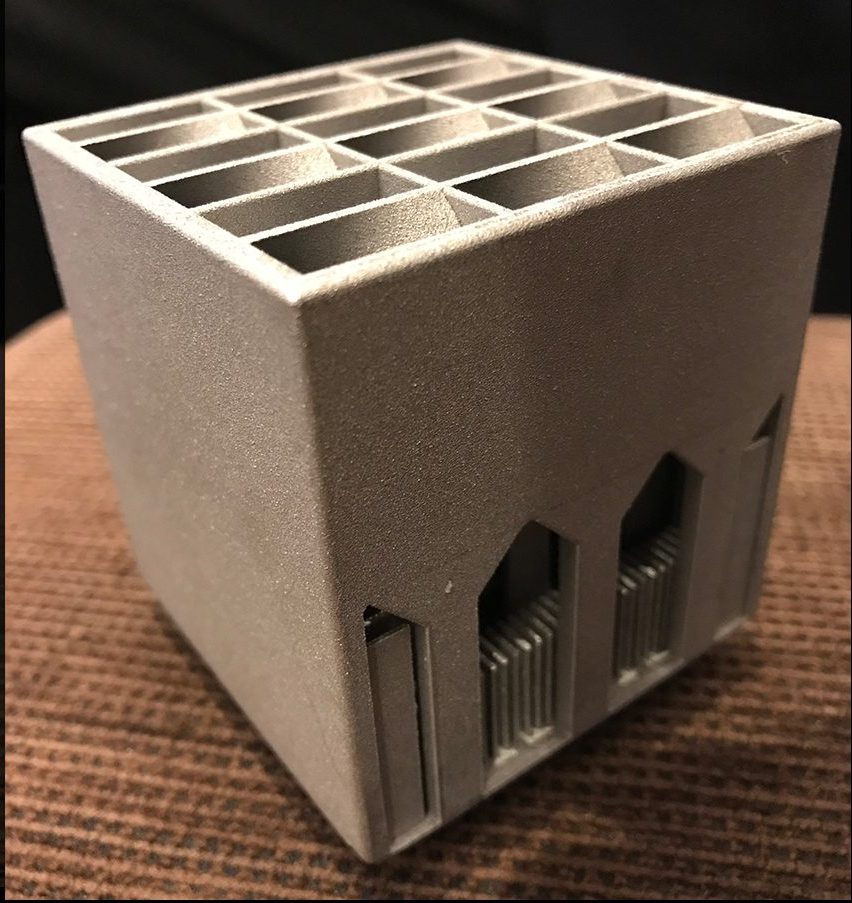Academics from the U.S and Ireland recently gathered at the 18th Intersociety Conference on Thermal and Thermomechanical Phenomena in Electronic Systems, in Las Vegas, Nevada, to innovate the design of heat sinks using 3D printing.
With the growing demand for personal electronics, heat sink design has become more significant. This is due to its ability to regulate the temperature of electronic devices, preventing overheating in such places as a computer processor.
In a GE-sponsored competition, teams from Arizona State University (ASU), Purdue University, the University of Maryland, Pennsylvania State University, and Trinity College Dublin, were the five finalists presenting their novel 3D printed metal heat sinks to effectively cool down electronics.
“There are some features that you cannot make with conventional methods,” said Faizan Ejaz, PhD Student in Mechanical Engineering at ASU. “If you want to make a cylindrical honeycomb structure, you cannot manufacture it without requiring other expensive post-processing steps. With the advent of additive manufacturing, now we have access to manufacturing very complex geometries.”

3D printed heat sinks
Additive manufacturing processes such as laser powder bed fusion (LPBF) have produced metal components with a wider range of complex geometries not possible with traditional CNC. Parts including 3D printed metal heat sinks, engines cylinders, and oil pump housings can be made at a fraction of the cost and material as a result of LPBF.
Using the GE Concept Laser M2 cusing system, the 5 university teams, which were chosen as finalists from teams of 21, realized each of their design concepts for an optimal heat sink. The ASU team allowed for a larger surface area on the heat sink to enable hot air from the electrical components to flow without compromising its efficiency. According to the team, this is a design restriction prevalent in traditional manufacturing.
“In many cases, we have to compromise between the manufacturing constraints and the device performance,” explained Beomjin Kwon, Assistant Professor at the School for Engineering of Matter, Transport and Energy, ASU, and leader of the design team.
“So in real experiments, we do not have a truly optimized device. But additive manufacturing now eliminates many design constraints imposed by traditional techniques. We can think about further optimized design compared to traditional heat-transfer devices.”
A cool concept
Elsewhere, the Purdue University team used topology optimization to find the best material distribution in the given dimensions of the heat sink design. Also, with thermal resistance in mind, the resulting shape of their 3D printed heat sink had a gently sloping “L” shape on one side, and a protruding “d” shape on the other. This causes airflow to back up and recirculate, spending more time in the heat sink.
Serdar Ozguc, a PhD student at Purdue’s Cooling Technologies Research Center (CTRC) stated, “There are big thermal challenges in today’s electronic components. People want smaller computers and phones, but at the same time, they want more power.”
“The heat that is generated by these CPUs affects performance, so we have to find a way to dissipate that heat safely and efficiently.”
All teams involved in this competition were restricted to the same dimensions and the material of aluminum. Furthermore, all 3D printed heat sinks were tested under the same conditions at Oregon State University.
Keep up with the latest 3D printing news by subscribing to the 3D Printing Industry newsletter. Also, follow us on Twitter, and like us on Facebook.
Searching for new talent or seeking a career change? Search and post 3D Printing Jobs for opportunities and new talent across engineering, marketing, sales and more.
Featured image shows entries to the GE sponsored heat-sink design competition. Image via Purdue University

